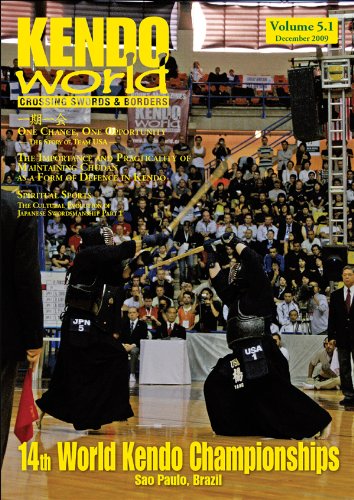
Kendo World 5.1

14th World Kendo Championships Sao Paulo, Brazil
The 14th World Kendo Championships (WKC) was conducted this year during the period of August 28 to 30, in the Brazilian city of Sao Bernardo do Campo. Although the winter season of the Southern Hemisphere, the sub-tropical climate of this area made for warm days and cool nights. Known for its cultural diversity, exotic cuisine and beverages, the cool sounds of Samba and Bossa Nova music, of a lifestyle spent on the beaches and in clubs, and of waxing; it was against this backdrop that the most anticipated world championships to date was conducted. Michael Komoto was there to report for Kendo World, and provides us with a detailed commentary of the events that unfolded.
One Chance, One Opportunity -The Story of Team USA-
The United States Men’s National Kendo Team (“Team USA”) placed 2nd for the second consecutive time at the 14th World Kendo Championships in Sao Paulo. As Chris Yang writes in this feature article, “Although a few months have passed since the World Championships, the anguish and disappointment we experienced after our loss to Japan still burns in our hearts as though it was yesterday. However, I think these emotions are the natural reaction for ten individuals who put everything on the line to chase a dream that most thought was impossible.” Believe me, this article makes for inspirational reading.
Inside View- 14th WKC and the Shinai Measuring Team
The Brazilian Kendo Confederation started to prepare staff for the 14WKC as early as 2007. All areas and sectors were identified and described, and volunteers were recruited from all over the country. One of the most important peripheral activities of the championship is the shinai check; the process of inspecting, measuring and validating the bamboo sword for official use according to the International Kendo Federation’s (FIK) specific regulations. Find out how things operated behind the scenes at the world’s most electrifying kendo competition.
Hanshi Says: Okada Yasuo (Hanshi 8-dan)
Born in Osaka on January 16, 1925, Okada Sensei graduated from Wakayama Industrial High School in 1941, and then started working in the construction industry until joining the Wakayama Police Department in 1955. He studied kendo under Higashiyama Kennosuke, Nakashima Akira, and served as the Shihan of the prefectural police force from 1964 until 1981. Okada Sensei has participated in all the major kendo tournaments in Japan including the All Japan Championships, and he placed third at the Meijimura Tournament for 8-dan kenshi. He passed the 8-dan examination in 1976, and was awarded the title of Hanshi in 1986. Okada Sensei reveals what he is looking for as an examiner in kendo promotion examinations. You don’t get better advice than this, not only for gradings, but for how kendo can change your life.
The 55th All Japan East-West Kendo Tournament
On Sunday September 13, 2009, Kendo World visited the Koshigaya Municipal Sports Centre in Koshigaya City, Saitama, which was hosting the 55th All Japan East-West Kendo Tournament. This tournament is one of the “big three” held every year under the auspices of the All Japan Kendo Federation – the other two being the All Japan Championship, and the Todōfuken Prefectural Tournament. Who won this year?
The Nuts ‘n Bolts of Kendo- What are the principles of Maai?
The author of this highly appraised series of articles is the late Nakano Yasoji Sensei (H9-dan). In this article, the legendary Nakano Sensei explains the intricacies of maai ‒ the distance between you and your opponent. Understanding your optimal striking distance is crucial in kendo, and Nakano Sensei gives us many clues of how we can enhance this vital aspect of our kendo comprehension.
The Importance and Practicality of Maintaining Chūdan as a Form of Defence in Kendo
This study by Takenaka Kentarō, former member of the Japanese team (2nd Place Individual in the 2000 WKC), examines the positive results of practising kendo by maintaining chūdan-no-kamae as a form of defence against an opponent’s attacks, as opposed to the “3-point-defence” position utilized by many young kendo practitioners in recent years. His fascinating study aims to illustrate practical examples and summarize the positive effects of focusing training in maintaining a correct kamae at all times.
Do it Yourself Kendo
Aurélien Lainé takes a look at some amazing technological gadgets used at the Kendo Club Nieul l’Espoir in France in lieu of a high ranking instructor. There are some amazing kendo devices out there!
Kendo That Cultivates People- Part 9: The Role of Keiko at ‘Tanren-ki’ Level
World-renowned kendo guru Sumi Masatake (H8-dan) explains the significance of ji-geiko as a form of training that incorporates all of the skills featured in kendo. Instructors need to distinguish what they expect practitioners to achieve through the different types of keiko (ie. kakari-no-keiko, hikitate-geiko and gokaku-no-keiko). In previous articles, Sumi Sensei described methods of uchikomi-geiko (practising continuous basic strikes against a partner) and yakusoku-geiko (practicing a set of predetermined techniques). In this article he outlines the elements of technique (waza) that need to be learned through the various kinds of ji-geiko.
Kendo in Kathmandu
Like the Yeti, Shangri La and small yellow gods with one green eye, kendo in Nepal has been a little mysterious. However unlike the aforementioned, the legendary “Lost Dōjō of Kathmandu” exists! Intrepid British traveller D. Hanson lugs her backpack to Kathmandu and joins the locals for a spot of kendo at what must surely be the highest dōjō in the world!
The Process of Making Japanese Swords: Part 2
Mikami Sadanao began his apprenticeship as a swordsmith in 1974 under Gassan Sadaichi, the famous smith of Sakurai-shi town, Nara prefecture, who was designated as a living national treasure for his achievements. Mikami Sensei founded his own forgery in 1980 in Chiyoda, a town located in Hiroshima Prefecture. Mikami Sensei felt that, although non-Japanese smiths could certainly learn a great deal through observation, the language barrier prevented them from understanding the greater intricacies of the forging process. With that in mind, he asked Nick Mathys to translate a book he wrote on the subject. Serialized in Kendo World, the content makes for absorbing reading for all interested in Japanese swords.
Reidan-jichi Part 9- Kamae
In his last article, Professor Ōya Minoru (K7-dan) from the International Budo University discussed the importance of kamae and striking with shin-ki-ryoku-itchi (unity of mind, spirit, and technique). In this article, he analyzes kamae in more detail, in terms of metsuke (gaze), kakegoe (vocalization), the kensen (tip of the sword), and shikai (four weaknesses of the mind).
Spiritual Sports: The Cultural Evolution of Japanese Swordsmanship- Part 1
What exactly does kendo have to offer and why? To answer these questions and explain the supposed benefits of participation, it is necessary to search right back to the roots of the modern martial arts and plot their strikingly cyclic evolutionary pattern up to the present day. This series of articles by Alex Bennett (me) will be divided into two parts, and will investigate the evolution of kendo extending back to the medieval period up to the present day. I will plot the ebbs and flows of the paradoxical role of the martial arts as they transformed from methods of killing to pacifistic ‘ways’ to ‘enlightenment’ and ‘character development’.
Celebrating the Dead
Michael Ishimatsu-Prime goes to the Sengaku-ji Temple to pay homage to the Loyal Retainers of Akō (or the 47-Rōnin), who, led by Ōishi Kuranosuke, exacted their revenge upon Kira Kōzukenosuke for his role in the death of their master, Lord Asano Takuminokami. This famous episode in Japanese history happened in 1702, and the rōnin are still idolized in modern Japan as the personification of loyalty. The story is likely to gather a broad international following with the upcoming Universal Pictures film of the Akō Gishi story starring Keanu Reeves.
Ideas and History of the Sword- Part 4: Swords in Early-Modern Japan
The rulers of early-modern Japan created a feudal society and established a code of conduct based on the principles of Confucianism. The “spirituality of swords” was highlighted in this period, but this was different from the spirituality of the mythological period. Based on Confucian notions, bushidō was developed as a moral code defining how warriors should live their lives, and the sword was considered as a symbol of the warrior’s morality. Ozawa Hiroshi Sensei finishes his series of articles with a detailed analysis of the symbolism of swords in the Tokugawa period.
The Nidan Grading
KW staff writer Aurélien Lainé dissects his latest grading experience. “Promotion examinations are amazing moments in our kendo careers. By attempting a grading, none of us become any stronger; instead, we need to get stronger to grade. A grading doesn’t change anything in anybody’s life. The next day we still need to go to work, we still need to wash the dishes, and we probably have to skip a couple of beers with mates to afford the grading fee. Yet it seems to matter so much to everyone. I guess we care because it brings a feeling of achievement”.
Trafalgar Square and Iai in the Sky
On August19, 2009, at 11am, a very public iaido demonstration was held in central London. The event was seen by hundreds of passing tourists, streamed live worldwide on the internet, and even shown on Sky TV. This particular demonstration was not given by a visiting senior Japanese master. Nor was it given by one of the many and capable UK senior instructors. No, the demonstrator was a 29-year old, newly qualified 2-dan iaido practitioner from Edinburgh. What’s really amazing about this story is the place where he did the demonstration!
The Kendo Coach: Sports Psychology in Kendo- Part 2: Coping with Anxiety
Anxiety is an inherent part of any competitive or evaluative situation. However, as Blake Bennett (Master’s student at the Osaka University of Health and Sport Sciences) observes in this article, the extent to which anxiety affects an athlete’s performance depends greatly on various personality and environmental factors, in addition to the coping strategies employed to manage the many feelings encountered by an athlete in a shiai or grading. Find out how coaches can implement strategies to turn anxiety into strength rather than a weakness.
Boffaism & Beating the Bush: Kendo & Violence
Dr. Sergio Boffa characteristically pulls no punches in his look at the role of violence in kendo. “Violence in kendo is not a goal in itself; it exists for historical and cultural reasons. It must be maintained because, if it is used wisely, it carries important pedagogical virtues. On the other hand, the practitioner who confuses his partner with a punching bag or hit-dummy has no place in a dōjō. One who fights only with brawn, or to satisfy his ego, cannot be said to be doing kendo. One who seeks to attack without being concerned with the technical constraints imposed by the theory and the rules of the kendo is a danger to his partners.”
Kendo and the Search for Inner-Peace
Given the violent nature of kendo (see above) it might seem to the casual observer rather paradoxical to turn to martial arts when you are looking for a calmer, stress-free life. However, warriors from the East have relied on the co-existence of martial arts alongside the fine arts for centuries to help achieve a balance in their lives. Today, dentists and share-brokers enter the kendo dōjō to face off against business consultants and students while seeking their own path to inner peace. Jeff Evans takes a look at the role of kendo in the 21st century.
A Sojourn in the Middle East
There are many challenges for kendo, iaido and jodo in the Middle East. The region needs a lot of assistance to further develop these arts in terms of equipment and instruction. Gabriel Weitzner hopes that by bringing the names and efforts of some of the key players in the region to the pages of KW, they will become known and receive the help they need.
A Duffle Bag & a Bogu Bag – Part 4: Demos!
Kendo globetrotter, Imafuji Masahiro, continues with his series of articles based on his international musha-shugyō experiences. In this instalment, he talks about the dreaded kendo demonstrations he participated in to increase the public profile of kendo, and try to get new members to join the club. Kendo demonstrations are almost unheard of in Japan, but they are a fact of life for many clubs in the international community.
Jukendo no Kata
The Jukendo-no-Kata’s ultimate purpose is to impart the essence of jukendo. It combines the basic techniques in set forms with a fixed order, and through learning the combination of techniques, students of jukendo develop a strong spirit, good posture, and technical ability. Baptiste Tavernier takes us through eight sets of Jukendo Kata in this relatively unknown budo art for the first time in the English language.
Book Mark: Samurai Wisdom- Lessons from Japan’s Warrior Culture Translated by Thomas Cleary
Michael Ishimatsu-Prime reviews Samurai Wisdom: Lessons from Japan’s Warrior Culture, the latest translation from Thomas Cleary on the subject of bushidō. The book contains three treatises by Sokō, in addition to one by Tsugaru Kodo-shi (a grandson of Sokō), and another by Yamaga Takatsune. The main focus of all of these treatises was social, not military, and they contain suggestions on how samurai should behave in their day-to-day dealings with superiors and subordinates, how to govern effectively, and how it was their responsibility to act as a guide for the rest of the country. A must read for all students of Japanese history.
Shinai Sagas: I’m Different Now…
Charlie Kondek continues to entertain us with his popular “Shinai Sagas” series of fictional stories. Providing a reprieve from all of the serious non-fiction articles about kendo, in his short story “I’m Different Now” Charlie introduces us to Ray, a young man who reflects on how he has changed over his time studying at college. Of course, kendo features strongly in his student life.
Naginata Technical Special: Shikake-Ōji- Part 7 Nanahon-me
There are 8 set forms practised in naginata known as Shikake-Ōji. Number seven (nanahon-me) is explained in this issue.
Principles of the Sword
The internationally distinguished sword expert, Dr. Stefan Maeder, takes a look at the “three kinds of strength” that are found in kendo. This series of reflective articles on the deep philosophical aspects of swordsmanship proved to be very popular with Japanese readers also when they were first published in the All Japan Kendo Federation’s monthly newsletter “Kensō”.
Nitō
Yamaguchi Masato introduces us to various ōji-waza techniques used in Nitō. Although still very much a minority in the kendo community, Nitō has seen a growth in popularity in Japan and around the world. These articles offer technical advice for those who wish to undertake the study of Nitō.
sWords of Wisdom – “Kiten no Mutō-dori”
“Kiten no mutō-dori” means to ‘steal the sword with savoire-faire’. Toda Echigo-no-Kami Shigemasa (1564‒1625) was a master of the Toda-ryū and retainer of the Kaga domain. His exploits in battle are legendary, and this article offers a glimpse of the genius that made him a respected medieval swordsman in Japan by introducing one of his special techniques‒ kiten no mutō-dori
Unlocking Japan: Part 17- The Safe Country?
“I awoke late this morning to discover that my bicycle had been stolen. Again. Second time in less than a year. Right from the driveway of my modest little home nestled in my modest little neighbourhood. If ever there was a justification for the use of four-letter words, it was this morning. Alas, fists clenched, I set off through the drizzle for the station cursing the universe.” What happened next? Lockie Jackson, ex-pat Aussie and long-time resident of Japan, asks the question: the police in Japan may be good at kendo, but is the country really safe?
Historical Sightseeing: Sekigahara Town
Sekigahara Town is situated in a valley basin measuring approximately 4km by 2km in south-western Gifu Prefecture. At first inspection there does not seem to be anything of noticeable significance about this small rural town. However, despite its initial quaint appearances, Sekigahara set the scene for one of the most bloody and influential battles in Japanese history; the Battle of Sekigahara (Sekigahara-no-Tatakai) in the year 1600. Bruce Flanagan delves into the history surrounding this tiny little town, and how the events that happened there changed the history of Japan.
Dōjō Files: Kendo Sensei Passing through Catalunya (South-West France)
The 2008‒2009 season saw the first kendo club of the Pyrénées Orientales area organize an important seminar supervised by Jean-Claude Tuvi Sensei, (R6-dan), a former international referee, and first European to adjudicate a Japan-Korea match in 1985. Laurent Santos-Pimpao introduces us to his club in France through this recent event.
AVAILABLE ON KINDLE AND THE BUDO BOOKS APP IN E-BOOK FORMAT! SEE THE LINKS BELOW!!


















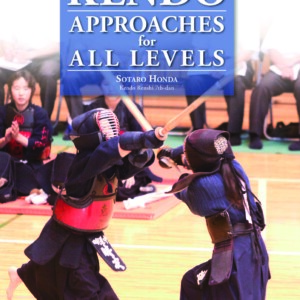
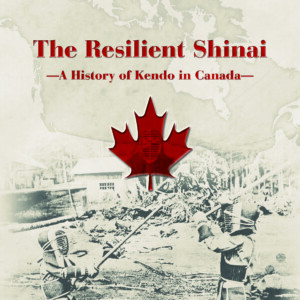
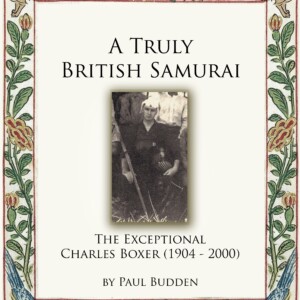

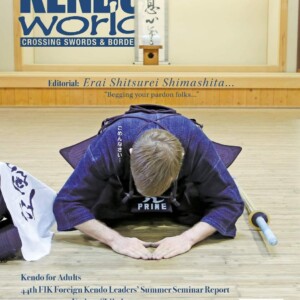
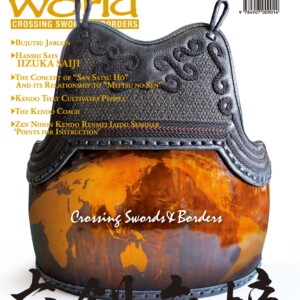
No comments yet.